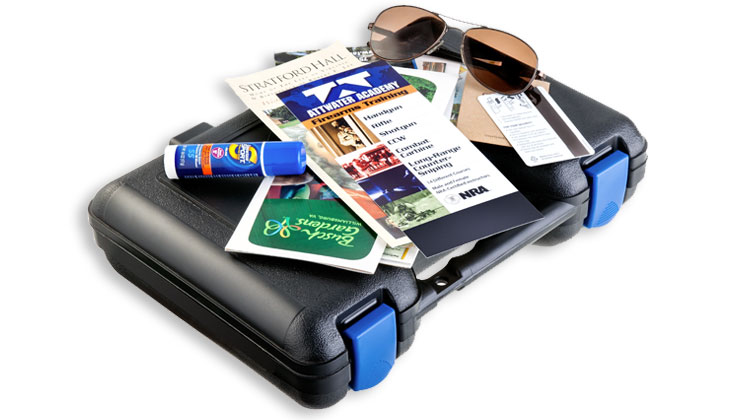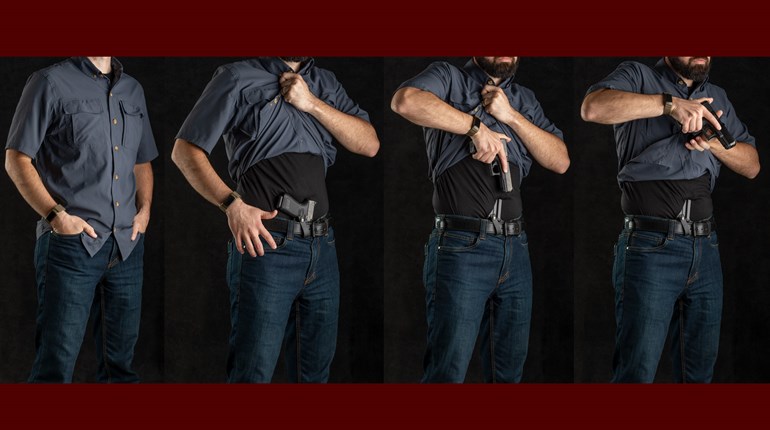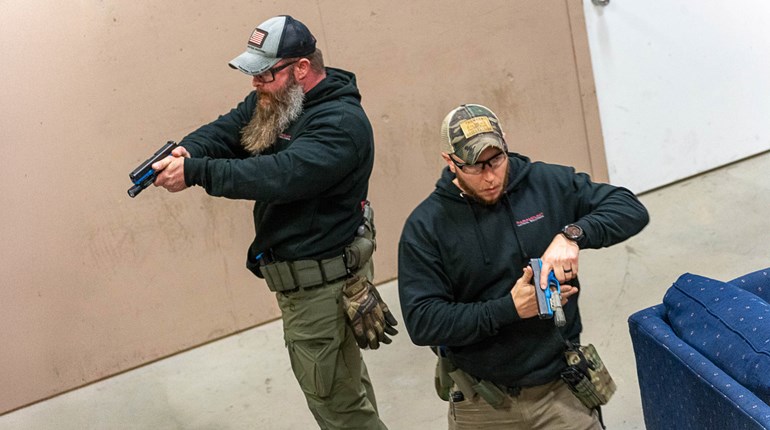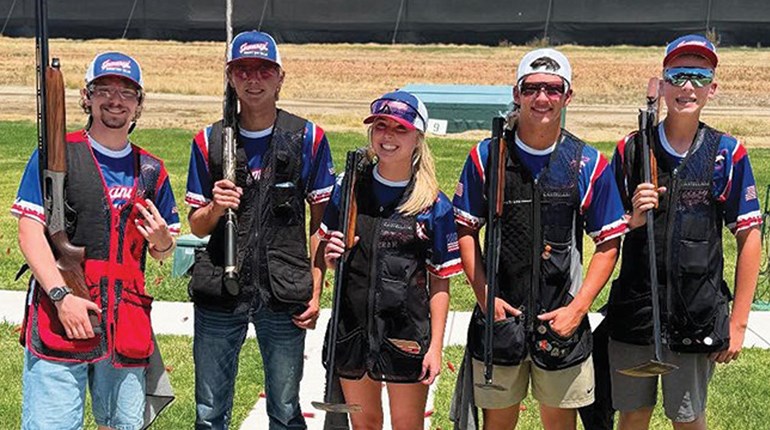
My peers will generally acknowledge that I am rarely the last man to arrive nor the first man to depart Happy Hour. An evening spent with good friends, some good whiskey and perhaps a good cigar is hard to beat. When these activities are conducted around a campfire or following a day of shooting, it’s like you’re on a dream vacation. So how cool would it be if you could finish your planned family vacation with this kind of day and then go home having qualified for a CCW permit in several states?
I spend a lot of time at Gunsite Academy, the premier civilian firearm-training center in the United States started over 30 years ago by the late Jeff Cooper. In addition to teaching various fighting skills to police, military and law-abiding U.S. citizens, Gunsite now offers a one-day class in which you can qualify for an Arizona concealed-carry permit, and while Arizona does not require a permit for concealed carry in state, the certificate is recognized by several other states and given reciprocity. Gunsite routinely schedules one CCW class every other month, and it’s usually on a weekend following one of the institution’s basic five-day defensive-pistol class. If you’re just finishing the five-day class, you will be at the peak of your skills and never more ready to get your permit. For your Arizona vacation pleasure, in addition to the old state capital of Prescott, the nearby mountain town of Flagstaff and some historic sections on old Route 66, this southwestern state has a small ditch called the Grand Canyon located within 100 miles of Gunsite that is definitely worth seeing and it attracts more than a few visitors each year.

The SureFire Institute is located in Las Vegas, which I think is an old Spanish term meaning “Great Vacation Place.” The SureFire range itself is about 25 miles south of Las Vegas directly on the way to (and a few miles short of) Hoover Dam. The Institute is owned by Bill Murphy, a retired 30-year California police officer. Like Gunsite, SureFire teaches other skills besides defensive pistol to citizens and offers a CCW class one Sunday every other month.
As you might expect, there are a great many similarities between the two curricula, but a couple of things struck me as noticeably different.
Nevada spends more time on state legal issues then on actual shooting. Range time at SureFire was at the end of the day, and the objective was simply to ensure your shooting skills were adequate; the CCW class is not about how to shoot. That said, the instructors reviewed handgun shooting basics and provided guidance and helpful hints as needed, but you either passed or failed the shooting test based on what your target showed. Second, the deeper we delved into various aspects of Nevada state law regarding self-defense, the more gray areas we encountered, producing lots of indefinite answers. Don’t panic. Every aspect of the legal system deals with this dilemma.
Gunsite basically used the content of its 250 Defensive Pistol Class. Specifically covered are the four basic-safety rules (easily remembered without overloading the memory banks), basic gun handling and movement and Cooper’s modern technique of the pistol including the color code of awareness and the Combat Triad, which is based on mindset.

Most of the morning was spent reviewing relevant state laws, after which we stopped for lunch. On the range, the instructor took us through some basic drills on loading, unloading, chamber checks and managing/clearing all three levels of malfunctions. There was a variety of handgun types on the line, some in the hands of people who may or may not have ever had any formal training. You do not run a gun on the Gunsite facility until the Range Master knows you’ve mastered some required safety basics. Despite a couple awkward moments on the square range, everyone passed the shooting skill requirements.
The whipped cream on the dessert (besides getting our certificates) was some input on how to handle a 911 call and post-shooting interview, should you ever be involved in an incident requiring the use of your new skills.
Although SureFire didn’t teach a range class per se, the instructor did review nomenclature and maintenance of different handguns. He also stressed that while you needed sight alignment, due to the close-range nature of defensive shooting, you did not need “perfect sight alignment” to make center-mass hits at ranges around 7 yards. In fact, all rounds fired for qualification were done at ranges from 5 to 10 yards. Within the scope of Nevada laws, we discussed what constitutes a reasonable person and what authorizes the use of deadly force by a private citizen—the primary guideline being in fear for your life. Also, while a violent entry into your home authorizes the use of deadly force, be careful to identify who has entered, since this is an arrest tactic sometimes used by SWAT teams serving warrants.
Unlike my home state of California, in Nevada brandishing a weapon is OK if it’s necessary for self-defense. In California, brandishing a weapon can cost you your CCW (and potentially much more). A couple of very important legal boundaries were defined. When entering a school, the boundary is the property line; when entering a government building, the boundary is the building itself, but not necessarily the parking lot.
SureFire also covered some very specific guidelines such as safe firearm-storage devices for home, car and airplanes, with the airplane part getting a bit fuzzy given the sometimes conflicting inputs of TSA and the individual airlines. As stated earlier, some questions did not have exact or consistent answers. Finally, there are three specifics Nevada insists you know about your CCW: First, you must carry your permit and ID whenever you carry your firearm; second, you have 30 days to notify the state if you move and third, you have 10 days to notify the state if you lose your permit. I was pleasantly surprised to learn that a personal visit to Las Vegas PD will let you complete the process for obtaining your CCW immediately. The next day (Monday) after my class at SureFire, I stopped by the Vegas PD headquarters, and in slightly more than an hour I completed all the requisite paperwork, including fingerprints. I paid my fees, and was on my way with the promise my CCW would be mailed to my out-of-state home address in about 90 days.
Don’t laugh at the three months—in late February this year, after completing all the training requirements and assembling the required documents for my California CCW, I called the Orange County sheriff’s office to make the required appointment for an initial interview. A few days later, I received an e-mail setting the date for my meeting on Oct. 20, 2015, 7 1⁄2 months later!
 I don’t go too far east these days—I get all the exposure to liberal government I can stand right here in California. I recognize, however, there are some great vacation spots in eastern states that will grant CCW permits to non-residents. Some friends whose judgment I respect (and yes, I have friends with rather questionable judgment in certain areas), mentioned International Training, Inc. in Virginia, located near a number of must-see historic American attractions.
I don’t go too far east these days—I get all the exposure to liberal government I can stand right here in California. I recognize, however, there are some great vacation spots in eastern states that will grant CCW permits to non-residents. Some friends whose judgment I respect (and yes, I have friends with rather questionable judgment in certain areas), mentioned International Training, Inc. in Virginia, located near a number of must-see historic American attractions.
Like Gunsite and SureFire Institute, ITI offers a number of firearm-training classes, but most relevant for our purposes is its one-day Virginia concealed-carry handgun course that runs from 8:30 a.m. to 5:00 p.m. The two-page curriculum on the facility’s website looks very much like a Virginia-oriented version of the Arizona and Nevada classes with the exception of the larger ammo requirement of 300 rounds—but hey, more shooting is almost always better than less shooting.
To locate a school near where you plan to vacation, simply Google the city or zip code, along with search terms such as “firearm training,” “firearm instruction” or “CCW certification.” Of course, make sure the school you choose employs NRA-certified instructors in addition to offering the particular course you seek.
Don’t blow off this kind of opportunity simply because an out-of-state CCW sounds like something too far from home to interest you. Once credentialed in a single state, by using the postal system, you can often add permits from one or two other reciprocal states until there are very few places in the United States where you can’t legally carry concealed handgun. Going through the process says something positive about your determination to remain a free American, and also sends a distinct message to those who seek to take away your rights.





































